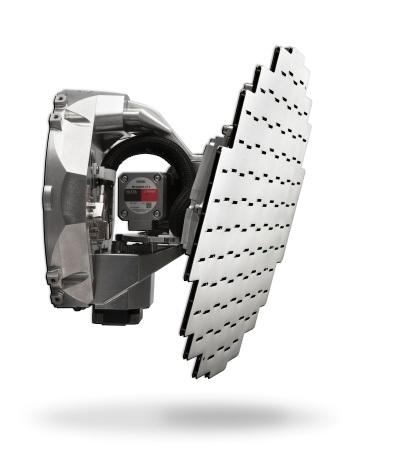Optional Features Include Turbulence Detection, Ground Clutter Suppression
A new solid-state weather radar was unveiled Monday by Garmin which the company says affordably brings advanced Doppler-enabled features to general aviation aircraft. The GWX 70 combines exceptional range and adjustable scanning profiles with precision target definition for accurate, real-time weather analysis in the cockpit.

“Compared to earlier generation magnetron-based weather radar systems, the digital GWX 70 offers significant improvements in capability, reliability and cost of ownership. And with optional advanced features like turbulence detection, the GWX 70 will help provide a safe, comfortable ride for passengers and crew,” said Carl Wolf, Garmin’s vice president of aviation sales and marketing. “Previously, this type of Doppler-enabled technology was only available onboard commercial aircraft and high-end business jets. The GWX 70 opens the door for aircraft of all sizes to affordably obtain the benefits of an advanced weather radar.”
The GWX 70’s compact, all-in-one antenna/receiver/transmitter is designed for easy installation in a wide variety of aircraft. Available antenna sizes include 10, 12 and 18 inches. The Altitude Compensated Tilt (ACT) feature helps reduce pilot workload by eliminating the need to reset the antenna tilt with changes in aircraft altitude. The pilot simply adjusts the GWX 70 once to the desired tilt angle, and the radar will automatically adjust to that level during any change in altitude, allowing the pilot to focus on other important tasks in the cockpit. Garmin’s exclusive WATCH™ feature (Weather Attenuated Color Highlight) helps identify the shadowing effects of storm cell activity, highlighting areas where radar signals are weakened and may not fully reflect the “storm behind the storm.”
The GWX 70 offers horizontal scan angles of up to 120 degrees. To focus radar scanning on a specific area of interest, the GWX 70 offers pilot-adjustable sector scanning from twenty degrees to 120 degrees. Ground mapping mode lets the pilot use the GWX 70 to scan terrain features for visual navigation. And the system also includes a vertical scanning function to aid in analyzing storm tops, gradients and cell buildup activity at various altitudes.
Optional Doppler-enabled advanced features are available including turbulence detection to identify turbulence in air containing particulates, such as precipitation or dust, out to 40 nautical miles. Ground clutter suppression is also available as an option, which allows the GWX 70 to separate radar ground returns and remove them from the display, so the pilot can focus on the weather of interest.
The GWX 70 will be compatible with a breadth of Garmin multifunction displays including the GTN series touchscreen avionics, the G1000, G2000, G3000 and G5000 integrated flight decks, the G500/G600, the MX 20 and the GMX 200. A number of manufacturers have already selected the GWX 70 as standard equipment on new aircraft including Cessna’s Citation Ten, Citation Latitude and Citation Longitude, as well as Bombardier’s Learjet 70 and Learjet 75. Garmin expects to receive Technical Standard Orders (TSO) certification of the GWX 70 in August. The GWX 70 will be available at that time starting at $20,995.
 ANN's Daily Aero-Term (05.17.24): Very High Frequency
ANN's Daily Aero-Term (05.17.24): Very High Frequency ANN's Daily Aero-Linx (05.17.24)
ANN's Daily Aero-Linx (05.17.24) ANN FAQ: Submit a News Story!
ANN FAQ: Submit a News Story! Classic Aero-TV: ANN Visits Wings Over The Rockies Exploration Of Flight
Classic Aero-TV: ANN Visits Wings Over The Rockies Exploration Of Flight Airborne Affordable Flyers 05.16.24: PRA Runway, Wag-Aero Sold, Young Eagles
Airborne Affordable Flyers 05.16.24: PRA Runway, Wag-Aero Sold, Young Eagles



